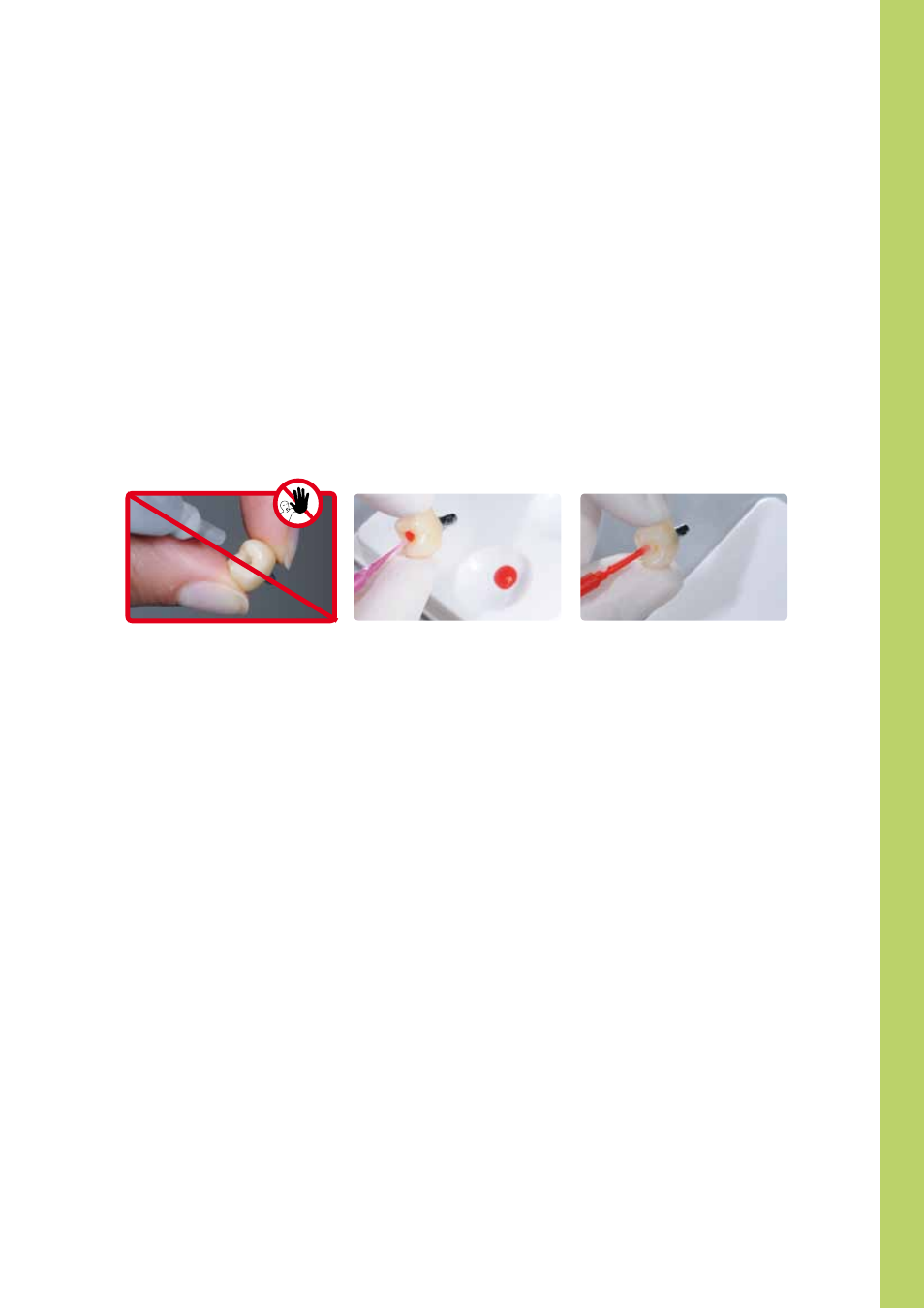Seating the hybrid abutment crown – Ivoclar Vivadent IPS e.max Press Abutment Solutions v.2 User Manual
Page 47

47
Application
procedure
–
Seating
and
After
car
e
Seating the hybrid abutment crown.
Preparing/conditioning the hybrid abutment crown
Please observe the following notes to prepare for the intraoral sealing of the screw channel:
– As a general rule, do not blast IPS e.max Press hybrid abutment crowns with Al
2
O
3
or glass polishing beads.
– Thoroughly clean the the hybrid abutment crown with water and blow dry.
– Etch the screw channel from the occlusal side with 5% hydrofluoric acid gel (IPS Ceramic Etching Gel) for 20 seconds.
Make sure that no etching gel comes into contact with the occlusal surface. Important: Do not use the IPS Ceramic
Etching Gel intraorally.
– Thoroughly rinse off the etching gel with water and dry with oil- and water-free air.
– Apply Monobond Plus to the etched and cleaned surface in the screw channel, allow to react for 60 seconds and then
blow dry with oil- and water-free air.
Do not blast IPS e.max Press object
Etch with IPS Ceramic Etching Gel for 20 seconds.
Apply Monobond Plus and allow to react for 60 seconds
and blow dry with air.
Seating the hybrid abutment crown.
For the permanent seating of the hybrid abutment crown, please observe the following working steps.
– Do not use phenolic mouth washes, as such products negatively influence the bond between the ceramic and the
composite.
– Insert the hybrid abutment crown intraorally into the implant.
– Manually screw in the matching implant screw.
– Tighten the implant screw with a torque wrench (observe the instructions of the manufacturer).
– Check the screw channel for contamination/moisture and clean with Total Etch (phosporic acid gel), if necessary.
– Insert a cotton or foam pellet into the screw channel.
– Apply the bonding agent.
– Seal the screw channel with a composite material (e.g. Tetric EvoCeram) in the appropriate shade.
– Polymerize with an LED curing light (e.g. bluephase).
– Check the occlusion/articulation after polymerization and correct possible rough spots with suitable fine-grain diamonds.
– Polish to a high gloss with silicone polishers (e.g. OptraFine).
